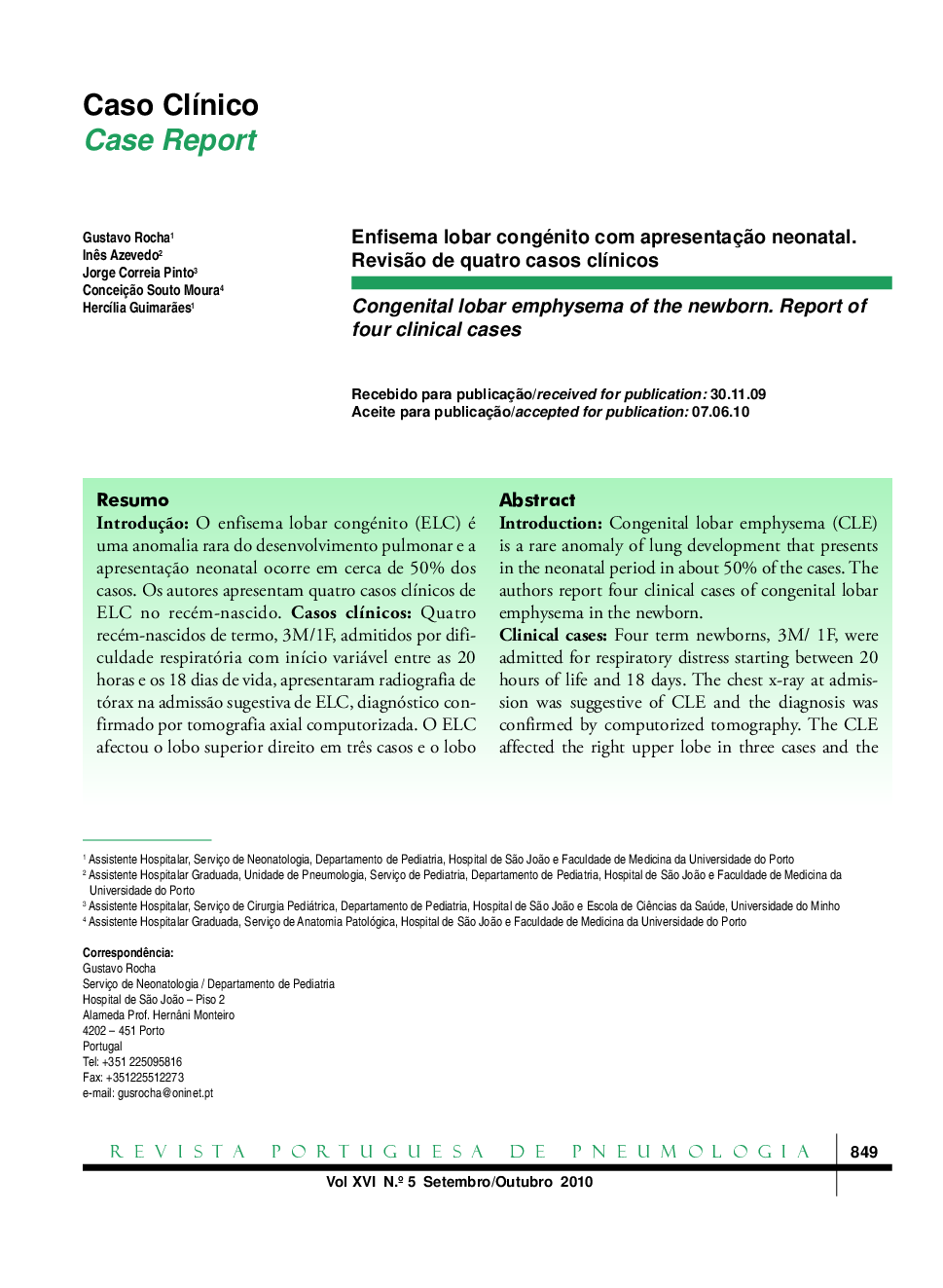| Article ID | Journal | Published Year | Pages | File Type |
|---|---|---|---|---|
| 4213909 | Revista Portuguesa de Pneumologia | 2010 | 9 Pages |
ResumoIntrodução: O enfisema lobar congénito (ELC) é uma anomalia rara do desenvolvimento pulmonar e a apresentação neonatal ocorre em cerca de 50% dos casos. Os autores apresentam quatro casos clínicos de ELC no recém-nascido. Casos clínicos: Quatro recém-nascidos de termo, 3 M/1 F, admitidos por dificuldade respiratória com início variável entre as 20 horas e os 18 dias de vida, apresentaram radiografia de tórax na admissão sugestiva de ELC, diagnóstico confirmado por tomografia axial computorizada. O ELC afectou o lobo superior direito em três casos e o lobo médio em um caso. Foi efectuada lobectomia nos quatro recém-nascidos. O estudo anatomopatológico das peças operatórias confirmou o diagnóstico nos quatro casos, tendo revelado hipoplasia da cartilagem da árvore brônquica em três. Conclusão: A casuística está de acordo com a literatura no predomínio no sexo masculino, forma de apresentação, tempo variável até ao diagnóstico, envolvimento unilobar e não identificação de causa evidente num dos casos. O tratamento cirúrgico foi universal.Rev Port Pneumol 2010; XVI (5): 849-857
Introduction: Congenital lobar emphysema (CLE) is a rare anomaly of lung development that presents in the neonatal period in about 50% of the cases. The authors report four clinical cases of congenital lobar emphysema in the newborn.Clinical cases: Four term newborns, 3 M/ 1 F, were admitted for respiratory distress starting between 20 hours of life and 18 days. The chest x-ray at admission was suggestive of CLE and the diagnosis was confirmed by computorized tomography. The CLE affected the right upper lobe in three cases and the medium lobe in one case. All patients were treated with lobectomy. The pathological study of the surgical specimens confirmed the diagnosis in the four cases, and revealed hypoplasia of the bronquiolar tree cartilage in three. Conclusions: Our series is according to literature regarding to male gender preponderance, clinical presentation, different time to diagnosis, unilobar involvement and no identification of an evident aetiology in one case. Surgical treatment was universal.Rev Port Pneumol 2010; XVI (5): 849-857
